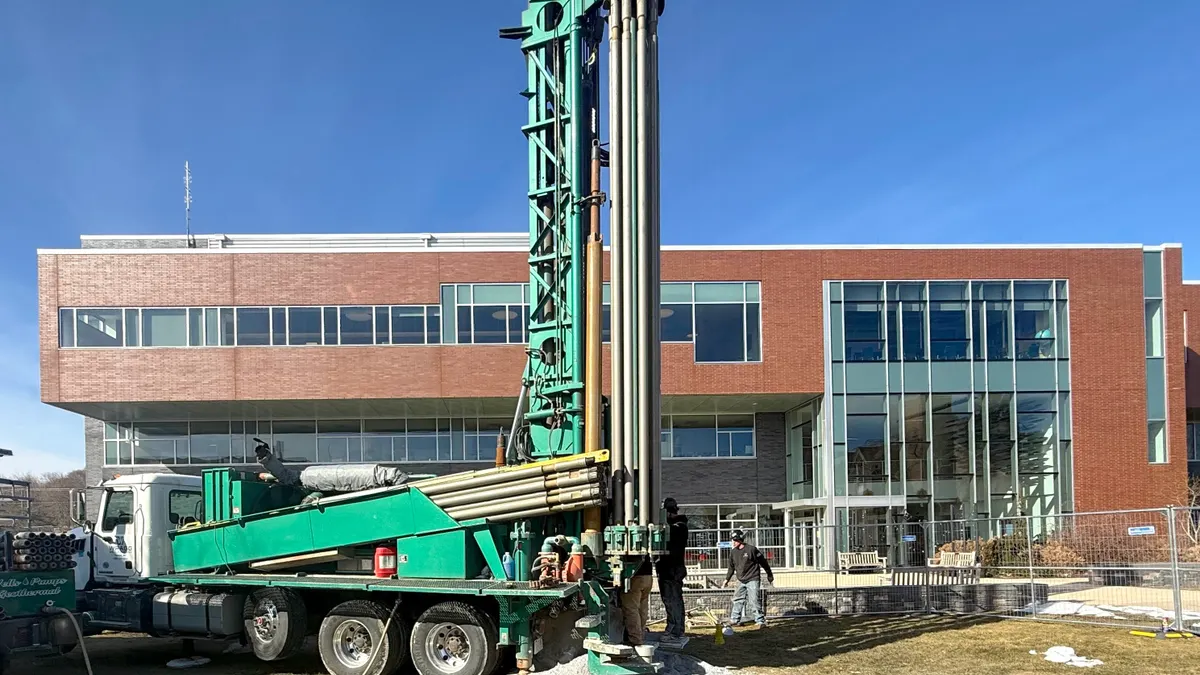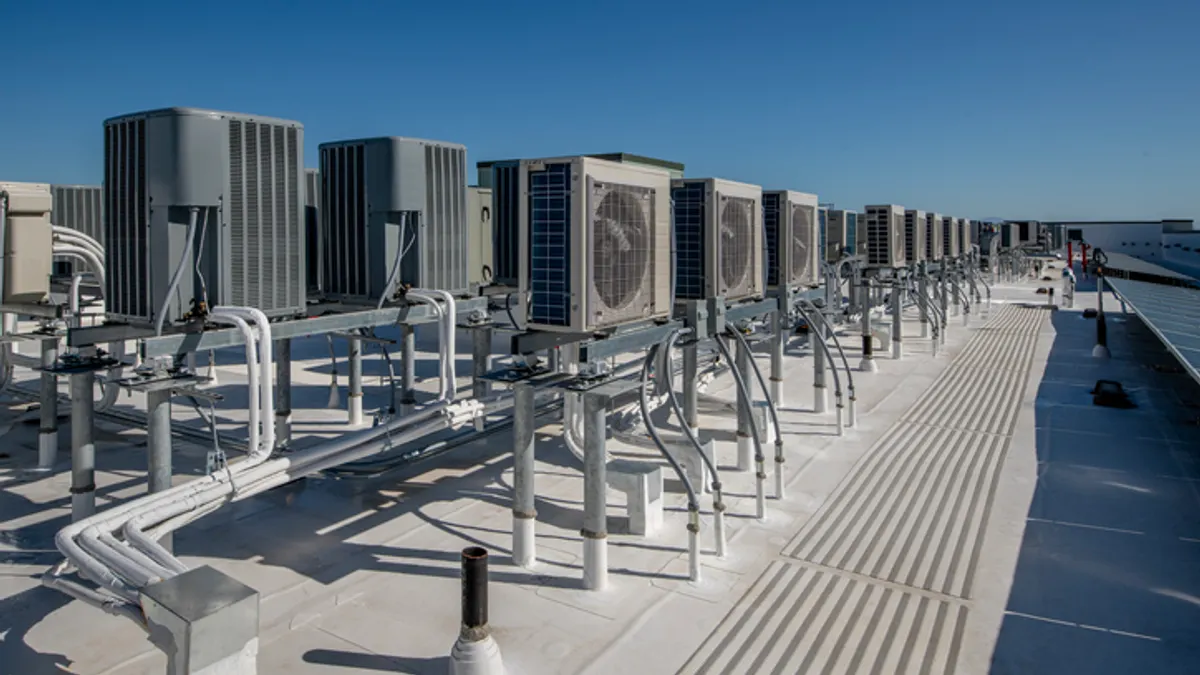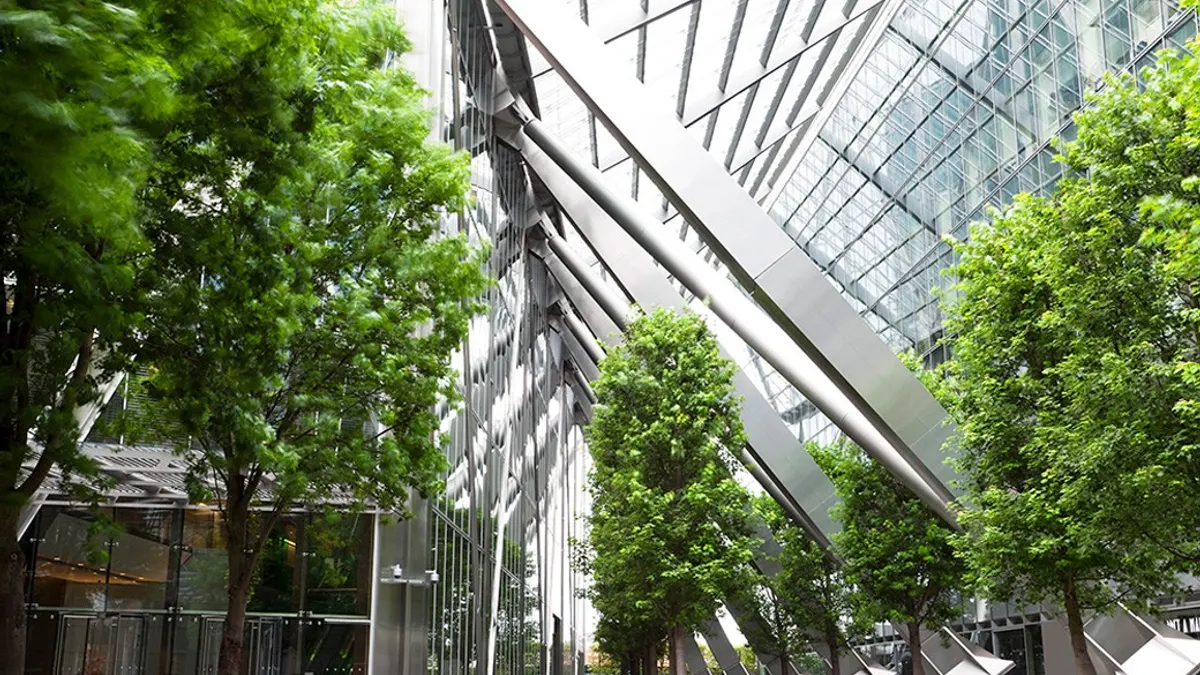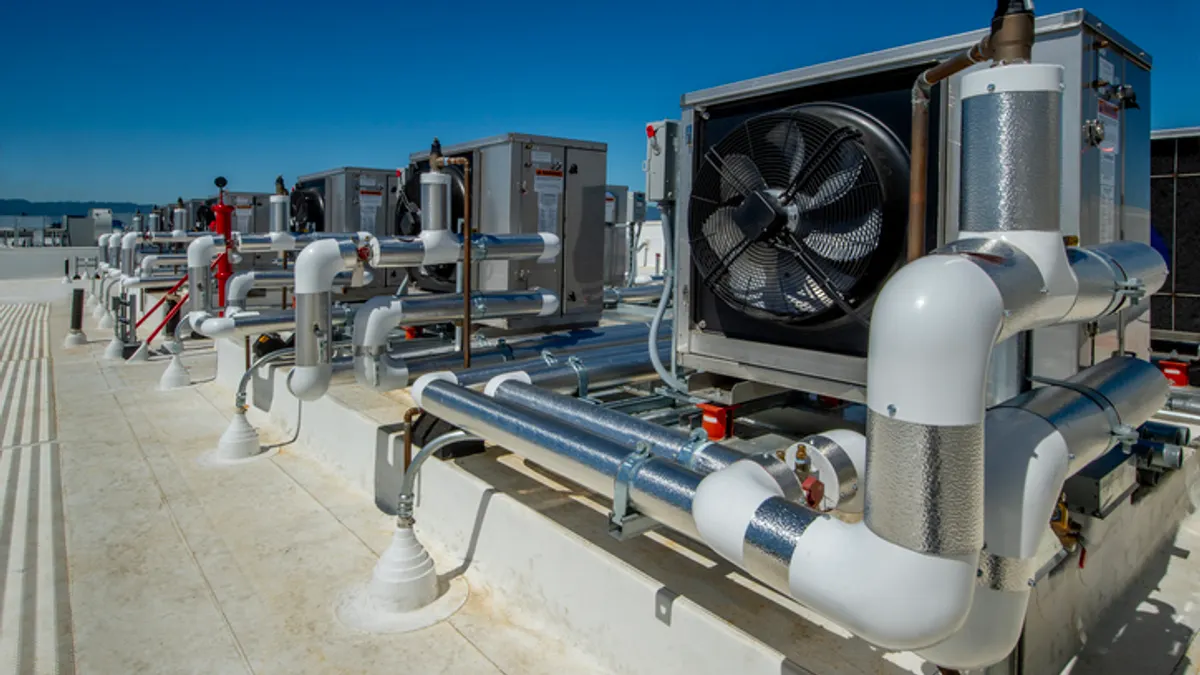Construction has begun on New York City’s largest solar array to date, comprising over 13,000 solar panels on the roof of John F. Kennedy International Airport’s New Terminal One as part of a 12-megawatt microgrid.
AlphaStruxure is taking charge of construction, operations and maintenance of the microgrid, installing raceways for cables that will connect 6.63 megawatts of solar power generated by the panels to the microgrid, according to a joint announcement Tuesday by the Port Authority of New York and New Jersey and JFK’s New Terminal One, the consortium responsible for the airport terminal’s overall design, development and construction. This array will be the largest at any airport terminal nationwide, per their news release.
The microgrid will distribute electric energy from the solar array alongside 3.84 MW from fuel cells and 1.5 MW, or 3.34 megawatt-hours, of battery energy storage through a localized energy system that can operate independently of the main power grid or when connected to the grid, the release noted.
The solar power, battery energy storage systems and fuel cells will be fully integrated and automated, creating one of the most advanced microgrids ever built, AlphaStruxure CEO Juan Macias said during a press briefing on Sept. 18. “We also will soon begin assembling all of the rack structures on the roof of the terminal in order, preparing for the solar [photovoltaic panel] that will be installed,” Macias said.

The microgrid design comprises four smaller microgrids that work as a single digital system. One of these microgrids will be located at the ground level, while other parts of the microgrid, such as the raceways for the cables that are being installed to interconnect the solar panels to electrical houses, will be on the roof, Macias said. The New Terminal One microgrid is expected to be especially resilient due to this design and each system can function self-sufficiently with sources of generation, storage, automation and control, per the release.
The microgrid will recover heat from the fuel cells to generate chilled water and hot water, generating enough electricity to power half of the terminal’s daily operations, PANYNJ said.
AlphaStruxure’s project partners include its parent companies, Carlyle, which is providing financing for the microgrid, and Schneider Electric, which is delivering microgrid technology, controls, software and services. AlphaStruxure is financing the microgrid project through an energy-as-a-service contract to ensure predictable operating costs and performance, without any upfront capital expenditures to PANYNJ or the New Terminal One.
The challenges for big energy users like airports are immense, Schneider Electric Microgrid North America President Jana Gerber said during the briefing. “Plugging into the grids is taking longer, costing more and isn’t always a clean — or consistent — source of power. Meanwhile, energy demand is increasing rapidly, ambitious climate goals need to be achieved and outages are a growing and looming threat,” Gerber said. Amid these challenges, sustainable microgrids can help airports solve for increases in energy demand, prevent outages and support their decarbonization efforts, Gerber said.
Schneider Electric is applying a comprehensive building management system built on its EcoStruxure software platform to “allow the airport to effectively manage their operations” and the software will be “integrated with the microgrid and our energy and power monitoring system,” Gerber said. Subsequently, New Terminal One will be able to optimally control lighting and the temperature of the building, ensure the comfort of airport occupants and monitor the terminal’s energy efficiency and energy consumption, she added.
The New Terminal One is part of the Port Authority’s $19 billion overhaul of JFK International Airport — an effort that will include two new terminals with “evocative public art and locally inspired retail options,” two expanded and modernized terminals and a new roadway network when complete, PANYNJ said. Of that investment, $15 billion “leverages private dollars,” with the Port Authority forking out $3.9 billion for “some of our roadways, parking facilities and infrastructure,” Jessica Forse, program executive for the JFK redevelopment program on behalf of PANYNJ, said during the media briefing.
The project aligns with the Port Authority’s sustainability goals, which include reaching net-zero emissions by 2050 and requiring greener operations from its business partners, such as airport terminal operators and airlines, per the release.
The PANYNJ, alongside the New York Power Authority, is also constructing a 12-MW solar canopy at JFK’s long-term parking lot 9, consisting of 7.5 MW of battery storage for airport peak energy use and a 6-MW community solar generation project, according to the release.
The $9.5 billion New Terminal One anchors the south side of the airport development, with the first phase of the project slated to wrap up in 2026 and the full completion expected in 2030, Forse said. Additionally, a new $4.2 billion terminal underway on the north side of the airport will “seamlessly connect” with terminal five, with the first phase also slated to begin in 2026, with completion expected in 2028, she added.
PANYNJ completed a $400 million expansion of Terminal 8 in 2022. Earlier this year, it “substantially wrapped” up a $1.5 billion modernization and expansion project at Terminal 4, Forse noted.



















